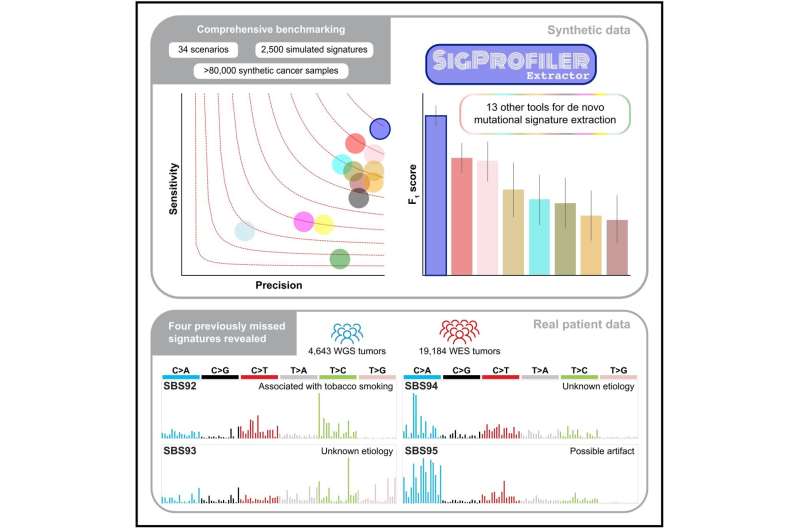Researchers at the University of California San Diego have for the first time discovered a pattern of DNA mutations that links bladder cancer to tobacco smoking. The discovery was made possible thanks to a powerful new machine learning tool that the team developed to find patterns of mutations caused by carcinogens and other DNA-altering processes.
Made possible by next-generation machine learning
The researchers found the tobacco signature with a next-generation machine learning tool developed by Alexandrov's lab. The team says it is the most advanced, automated bioinformatics tool for extracting mutational signatures directly from large amounts of genetic data.
"This is a powerful machine learning approach to recognize patterns of mutations and separate them from genomic data," said Alexandrov. "It takes those patterns and deciphers them, so that we can see what the mutational signatures are and match them with their meaning."
He compared the machine learning approach to picking out individual conversations at cocktail party.
"You have multiple groups of people talking all around you, and you are only interested in hearing certain individuals speaking," he said. "Our tool essentially helps you do that, but with cancer genetic data. You have multiple people around the world exposed to different environmental mutagens, and some of those exposures are leaving imprints on their genomes. This tool goes through all that data to pick out what are the processes that cause the mutations."
The tool was used to analyze 23,827 sequenced human cancers. It found four mutational signatures—including the one in bladder cancer tied to tobacco smoking—that had not been detected by any other tool. The three other signatures, found in stomach, colon and liver cancers, still warrant further study to see what processes caused them.
To show how powerful their tool is, the researchers put it to the test against 13 existing bioinformatics tools. The tools were assessed for their ability to extract mutational signatures from more than 80,000 synthetic cancer samples. The tool that Alexandrov's team developed had outperformed all the others. It detected 20 to 50% more true positive signatures, with five times less false positive signatures. It even performed well when analyzing noisy data, whereas the other tools failed.
"In bioinformatics, this is the first time that such a comprehensive benchmarking has been done on this scale for mutational signature extraction," said Diaz-Gay. "It is a huge undertaking, comparing many tools across many datasets."
Creating a more user-friendly and personalized tool
The team's ultimate goal is to create a web-based tool that more researchers can use and as a result, profile more patients.
"Right now, this tool requires bioinformatics expertise to run it," said Alexandrov. "What we want is to create a user-friendly version on the web, where researchers can just drop in a patient's mutations, and it immediately gives you the set of mutational signatures and what processes caused them."
"Our idea for the future is to leverage this tool to analyze patients on an individual level," said Diaz-Gay.
More information: S.M. Ashiqul Islam et al, Uncovering novel mutational signatures by de novo extraction with SigProfilerExtractor,
Cell Genomics (2022).
DOI: 10.1016/j.xgen.2022.100179
Citation: Mutational signature linking bladder cancer and tobacco smoking found with new AI tool (2022, September 26) retrieved 26 September 2022 from https://medicalxpress.com/news/2022-09-mutational-signature-linking-bladder-cancer.html
This document is subject to copyright. Apart from any fair dealing for the purpose of private study or research, no part may be reproduced without the written permission. The content is provided for information purposes only.










 User Center
User Center My Training Class
My Training Class Feedback
Feedback












Comments
Something to say?
Log in or Sign up for free